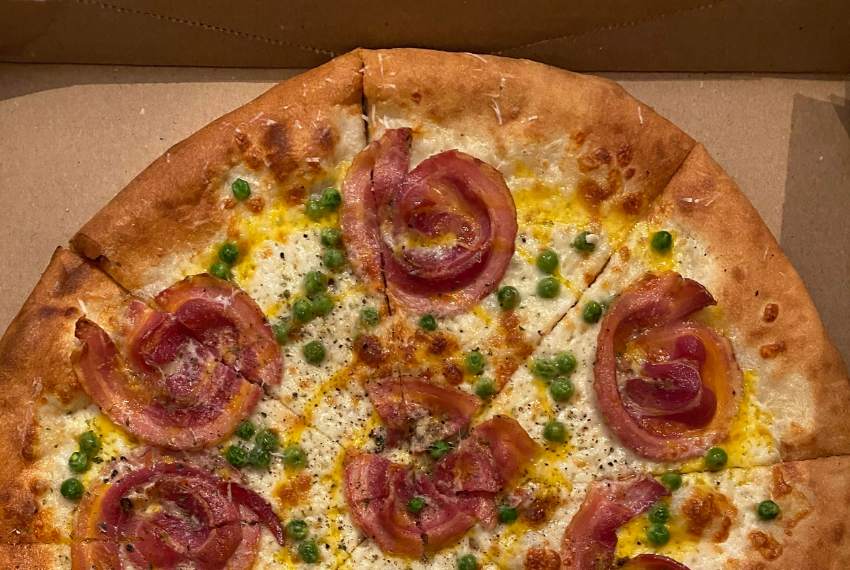Call Sales: +1 (833) 437-3835
Call Sales: +1 (833) 437-3835
Revel Systems | January 7, 2021 |

Many new restaurants struggle with the idea of whether or not it’s advantageous to delve into the food delivery industry. While restaurant traffic trends have shown that the delivery industry is on the rise, it’s still an added investment and, thereby, an added risk to undertake.
Food delivery industry statistics suggest that the sector will eventually account for nearly half of restaurant sales by 2023. So, prudent business owners will research the growing food delivery trends, and read the latest restaurant delivery service news to see the direction the industry is moving.
To help you stay up-to-date, we’ve created a list of the top trends in the food delivery service industry today.
The fastest growing restaurant traffic trend in 2020 was the outsourcing of delivery to third-party fleets. In order to meet the increased demands for delivery, many restaurants had to partner with various delivery providers.
While this shift led to an increase in food delivery, businesses have lost some of their autonomy. Despite having access to a larger regional demographic, companies allocated operational control to outside entities. Many business owners rightfully fear that their customers’ experience will suffer. To assuage these fears, you can incorporate new food delivery management software into your business model. However, you're still placing the trust of your clients into the hands of another company.
The key to gaining market superiority has long been undercutting your opponents in price. However, the current food delivery trends suggest that the best way to get a larger slice of the market share pie is to beat out your opponents when it comes to the convenience of your service and product.
Modern customers opt to accept higher delivery fees if that means they can forego waiting at a restaurant or preparing a meal at home. If they can have their meals delivered without engaging with another human, that’s even better.
This trend is extremely evident if you look at the habits of millennials. The National Restaurant Association reported that 74 percent of millennials prefer delivery, and 34 percent of customers choose takeout if they can just push a button to make their order.
Third-party delivery fleets have impacted the industry, but they haven't completely taken over the show. In recent years, some businesses opted to enhance their in-house delivery services, forming their own fleets.
By choosing to amass their in-house delivery fleet, these restaurants obtain a larger portion of the delivery revenue that would otherwise go to their outsourced counterpart. Adopting this method might sound like a no-brainer, so why would any company willingly give away their income? Because in-house delivery requires a massive investment in infrastructure and technology to keep pace with demand. Businesses must install innovative point of sale systems, train and manage drivers, and maintain costly delivery dispatch software.
All of these systems need to work smoothly to provide exceptional customer service. If a company can manage to wrangle all of these moving parts, they may eventually see a net profit from keeping their delivery service in-house.
Social media is a society-changing phenomenon that no one fully predicted. In the beginning, Facebook was just a way to find old classmates. Now, platforms such as Instagram act as a gateway for media consumption and shopping.
One such standout is Twitter. What was once a place for witty retorts and banter has evolved into so much more. Case-in-point, take Domino's Pizza. This company had the innovative idea to simplify the delivery process by having their most dedicated customers order a pizza with a single emoji.
They had their clients create simple profiles tied to Domino’s online delivery platform, where they stored customer details and their most-ordered pizza. Then, if you posted a single pizza emoji to Domino's Twitter account, they would deliver a hot pie straight to your door.
One of the more inventive food delivery trends of 2020 was the incorporation of drone technology. Drones have become the future of fast delivery: they are free from irregular traffic patterns and potential driver accidents, and they can fly past red lights.
While some countries and regions may take longer to adopt this method of food transportation due to flight regulations (and to a lesser extent, food pirates), drones are a trend that isn’t going away anytime soon.
With the channels of delivery opening up, it's becoming increasingly vital to maintain analytics and examine your operational efficacy. As the saying goes, what gets measured gets managed. You need to scrutinize your delivery service regularly, and to do that effectively, you need to measure your data.
In hopes to stay ahead of the competition, companies invest heavily in systems that can measure, analyze, and improve their delivery performance rates.
As we enter a new year, most of these food delivery trends will maintain their momentum and start evolving to provide a stellar customer experience. To keep in line with these changing innovations, you need a point of sale platform that is flexible and agile. Revel Systems can help. We have designed an intuitive software suite meant to tackle the most complex delivery options. Contact us today and test our services with a free demo!